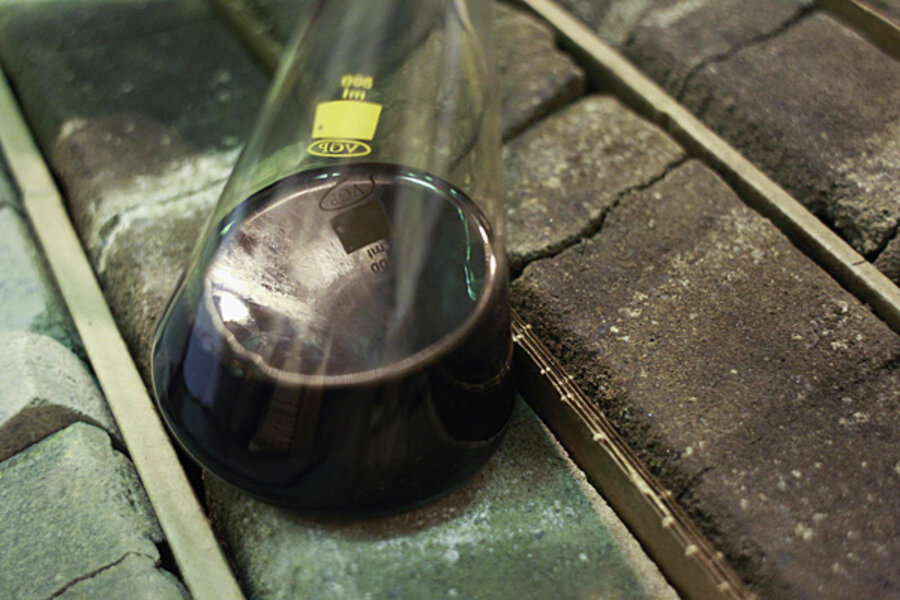EIA: World has more shale oil and gas, but will it drill?
Loading...
If the world seems suddenly awash with oil and natural gas, it's because of a stubborn rock called shale.
The amount of known technically recoverable oil from shale formations has jumped 10 times in the past two years, according to a new 41-nation survey by the US Energy Information Administration. The amount of technically recoverable shale gas is up 10 percent from the last time the EIA surveyed the world's shale formations.
How much of that fossil-fuel energy actually sees the light of day remains unknown. Although the number of known shale formations has doubled in the past two years, economics trumps geology in the energy. What's clear is that nations will spend the next several years trying to replicate the success of the United States and Canada in turning geologic obstacles into fossil-fuel windfalls.
"As shale oil and shale gas production has grown in the United States to become 30 percent of oil and 40 percent of natural gas total production, interest in the oil and natural gas resource potential of shale formations outside the United States has grown," EIA Administrator Adam Sieminski, said in a statement.
Technically recoverable shale gas now represents nearly a third of the world's total natural gas, according to the EIA report, released Monday. Shale oil makes up 10 percent of the world's crude oil.
China leads the world in shale gas resources with 1,115 trillion cubic feet. It's No. 3 in shale oil with 32 billion barrels. Russia's 75 billion barrels of shale oil tops the list of shale oil reserves. Argentina shows potential as well with 27 billion barrels of shale oil and 802 trillion cubic feet of shale gas.
But these numbers come with an asterisk.
"Today's report indicates a significant potential for international shale oil and shale gas, though the extent to which technically recoverable shale resources will prove to be economically recoverable is not yet clear," Mr. Sieminski said.
Just because it's there in the ground, doesn't mean you'll make a profit drilling it out. Extracting unconventional oil and gas is more costly and complex than the gushing oil wells of yesteryear, and the price at which you can sell it varies based on unpredictable global markets. Energy companies must meet their "breakeven points" – ensuring the cost of recovering the resource is less than what people will pay for it.
The global outlook is further complicated by the potential for a dramatic increase in natural gas exports from North America. The US approved its second liquefied natural gas export terminal last month and many expect more to follow. Canada is also eyeing possibilities for capitalizing on its shale gas resources.
Environmental impacts will also play a role in global shale development. A handful of US states have considered banning hydraulic fracturing out of concerns over local water supplies and leaks of heat-trapping methane. The drilling technique is already banned in France and will likely face opposition in other countries as companies look to tap global shale resources.
Companies will also have to contend with geologic variety. No two shale formations are equal, and vary within the formation itself. North Dakota's Bakken formation is more productive the deeper down you drill.
This "shale heterogeneity" means there's no guarantee China, Russia, and other countries will enjoy the same production boom North America has seen in recent years.








